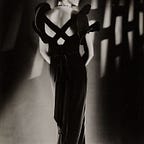Episode 7 — Seventies Dreams of Denim & DIY — PT 1
Hello and thank you so much for tuning into this week’s episode which you can also find here.
As promised, you can find key dates, concepts as well as accompanying images to the editorials discussed in this week’s episode below.
Images & Editorials
Flower Bouquet. Elisabeth Meineke. Sibylle 3/1975
Beginning in 1975, Sibylle takes on some art directorial nuances with its monthly issues. Each issue now features a still life floral bouquet in the style of the old masters which radiated on the glamour and prestige of the magazine. And it’s artists and photographers like photographer Elisabeth Meineke who is to create this image.
SIDE NOTE: For an interesting contrast, when I was doing my research for my master’s thesis where I focused on the Nazi run fashion publication Die Dame and its pursuit for an aryanized vision of fashion, and this is going back exactly 11 years ago, so any thorough reexamination into the, I came across several magazine covers featuring old gothic paintings by Cranach, Rococo, Baroque and other paintings from the history of Western European art.
“Regan” Rudolf Schaefer. Sibylle 3/1975
This 2-page spread — one of Rudolf Schaefer’s first projects to appear in “Sibylle” — highlights the photographer’s masterful lighting techniques and seasoned technical skill. Patterns from these flowy viscose dresses illuminate onto the page while the models evoke an almost heavenly quality.
“Mit einem Bein auf dem Boden der Wirklichkeit” Evelyn Richter. Sibylle. 5/1977
“Mit einem Bein auf dem Boden der Wirklichkeit”/ With one foot on the ground of reality — was a double-page feature which ultimately plays with ideas of perception and illusion. If you were to casually glance at this image, it looks like a self imposed trompe l’oeil featuring students and academics at the Karl Marx University in Leipzig playfully posing in front of a socialist realist mural by Prof Werner Tuebke. It evokes a sense of freedom and irreverence within a socialist reality mural. Was this an act of political staging within the tightly controlled and oppressive zeitgeist of late 70s East Germany?
Is it professing a sense of freedom despite the harrowing reality of increased intolerance of differing political opinions?
“Zirkus Z”. Sibylle Bergemann. Sibylle. 6/1976.
1976 was considered the “bleierne zeit”/heavy times for citizens of the GDR. Utopic visions of vibrant & thriving society were faltering. After the failure of various economic strategies, the decline of industries caused by poor investments among other problems, catapulted the country into crisis mode. In the exhibition catalog Sibylle: Zeitschrift fuer Mode und Kultur 1956–1995, the author notes that Sibylle Bergemann’s photo series “Zirkus Z” evokes a sense of fatalism that was felt throughout East Germany.
“Bluetenfest” Rudolf Schäfer. Sibylle. 2/1978
Schäfer continues to further his skill set by manipulating proportions, patterns & perspective with “Bluetenfest”/Floral Fest. This editorial is one of the first featured in Sibylle: Zeitschrift fuer Mode und Kultur 1956–1995 to feature a black/POC model.
“Der Nächste winter kommt bestimmt”. Ute Mahler. Sibylle. 4/1978
Featured bucolic scenes of models layered in floral dresses, sherpa jackets and chunky turtlenecks while playing with farm animals, this editorial underlines the romantic and ethereal qualities of Ute Mahler’s work.
Key Dates & Concepts
1974, initiatives to assert East Germany as a socialist nation state within the global sphere are strengthen when a 1974 amendment to the Constitution deleted all references to the “German nation” and “German unity” and redefining east East Germany as “a socialist nation-state of workers and peasants” with “an inseparable constituent part of the socialist community of states.”
1976, Stasi Erich Mielke proposed an extensive compendium of psychological warfare methods called Zersetzung — a pseudo-scientific term for what would now be called gaslighting, literally meaning “biodegradation”.
The Staasi has specific target groups who the thought were a threat to East Germany those included
- associations of people making collective visa applications for travel abroad
- artists’ groups critical of the government
- religious opposition groups
- youth subculture groups
- groups supporting the above
Denim Jeans & the GDR…
1974 — state-owned factories begin producing jeans which are called “rivet” pants.
1978 — rivet pants/jeans are rebranded with new designer brands like “Boxer” “Wisent” “Bison” “Shanty” “Goldfuchs”. (Some pair are even available today on Etsy. Like these dungarees ) available at youth clothing stores like Jumo (Jugendmode) and featured in Sibylle
— Honecker signs a contract for the purchase of 1 million pair of Levi-Strauss jeans. SIDE NOTE: The GDR had gotten into a bit of hot water with Levis due to the pocket seam and design proportions of their Wisent jeans.
For more reading on this, I recommend checking out Rebecca Menzel’s book Jeans in der DDR
